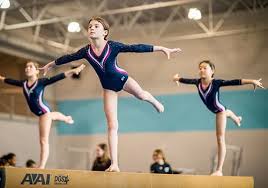For many parents, gymnastics is a go-to extracurricular activity for physical health and energy release. But research—and plenty of real-world experience—suggests it’s doing much more than improving balance and coordination. Gymnastics for kids can directly support academic success, boosting focus, memory, and even maths skills.
Let’s explore how this movement-based discipline quietly supports the classroom, and why it could be the key to unlocking your child’s full learning potential.
How Movement Enhances Brain Function
Physical activity is strongly linked with brain development. Gymnastics, in particular, demands a mix of focus, rhythm, memory, and spatial awareness. These aren’t just motor skills—they’re cognitive workouts.
Each cartwheel, handstand, or beam routine requires a child to process movement, timing, and feedback from their body. Over time, this strengthens neural pathways that also support academic skills like:
- Reading comprehension
- Numerical reasoning
- Short- and long-term memory
- Executive functioning
A 2018 study by the University of Eastern Finland found that children who engaged in higher levels of physical activity had better academic achievement and improved attention regulation, especially in mathematics.
The Discipline Transfer: From Gym to School Desk
Discipline is a central part of gymnastics. Children learn to listen, follow multi-step instructions, self-correct in real time, and persevere through repeated practice. These behaviours are directly transferrable to the classroom environment.
A child who’s been training in gymnastics for six months will often:
- Wait their turn more patiently in group activities
- Follow classroom rules with less prompting
- Show greater persistence in problem-solving tasks
- Develop emotional control during challenging assignments
The structured nature of gymnastics, combined with the reward of incremental progress, gives kids the kind of learning mindset that pays off in spelling tests, homework, and class discussions.
Gymnastics Builds Confidence That Fuels Learning
Few things boost a child’s motivation like mastering a physical skill. Whether it’s sticking a landing or nailing a backbend, these moments offer immediate, visible proof of growth.
And that sense of success? It snowballs.
Children who believe in their ability to learn and improve are more likely to take on challenges in the classroom. They’re less afraid of failure because they’ve experienced what it means to get back up—literally. They take pride in their effort. And they learn that consistency beats perfection.
This confidence also translates to public speaking, class presentations, and even trying out for school leadership roles.
Social Skills that Shape Learning Attitudes
Gymnastics classes bring kids together in small, coach-led groups, creating a rich space for social development. Children practice:
- Respecting others’ space and turn-taking
- Encouraging peers during tough drills
- Resolving small conflicts independently
- Supporting new members of the group
These are the same interpersonal skills that make group projects at school easier and more productive. A child who can encourage a teammate on the mat is more likely to collaborate in a classroom science experiment—or help a peer catch up after being absent.
These day-to-day interactions strengthen empathy, cooperation, and a sense of belonging—all linked with stronger academic outcomes and lower school dropout rates.
Fine and Gross Motor Control Support Literacy Development
There’s a surprising link between movement and reading. Fine motor skills—like the kind developed through bar grips, handstands, and floor routines—are closely connected with writing fluency and reading comprehension.
Meanwhile, gross motor activities help kids develop rhythm and timing, which are essential for phonemic awareness (the ability to hear and manipulate sounds in words). This means your child’s gymnastics routine might be supporting their literacy journey more than you think.
Real-Life Impact: A Parent’s Perspective
Take Amy, a mum from outer Melbourne. Her 7-year-old son struggled to sit still in class and had trouble following instructions. After enrolling in gymnastics, Amy noticed a transformation.
“He started listening more closely at school. The teacher said his focus had improved. At home, he even began doing his homework without a fight.”
While this is anecdotal, it’s echoed by thousands of parents around Australia. Structured movement, when it’s fun and challenging, gives kids the mental toolkit they need to thrive.
Why Timing Matters
The best time to enrol a child in gymnastics is between the ages of 4 and 10. This is when foundational cognitive and emotional patterns are being shaped—and when movement-based learning can have the biggest long-term effect.
But it’s never “too late.” Even pre-teens can benefit from joining a beginner-level gymnastics program, especially if they haven’t yet found their niche in team sports.
Let’s Not Forget: Gymnastics Is Fun
Amid all the educational benefits, it’s worth remembering: kids love gymnastics. It’s one of the few sports where creativity, challenge, and progress come together in a way that feels like play.
This makes it sustainable. A child who enjoys their weekly gymnastics class is far more likely to stick with it. And over time, that consistency becomes part of their identity—as a learner, a mover, and a confident contributor in and out of school.
A Final Thought
Gymnastics for kids isn’t just about movement. It’s about momentum—in focus, in confidence, in social growth, and in academic achievement.
If you’re exploring activities that truly support your child’s whole development, gymnastics might just be the most undervalued resource out there. And if you’re already enrolled in other sports like gymnastics for kids, adding a gymnastics class could supercharge the benefits.
Whether your child is already excelling or just finding their feet, gymnastics could be a game changer. One backflip at a time.

